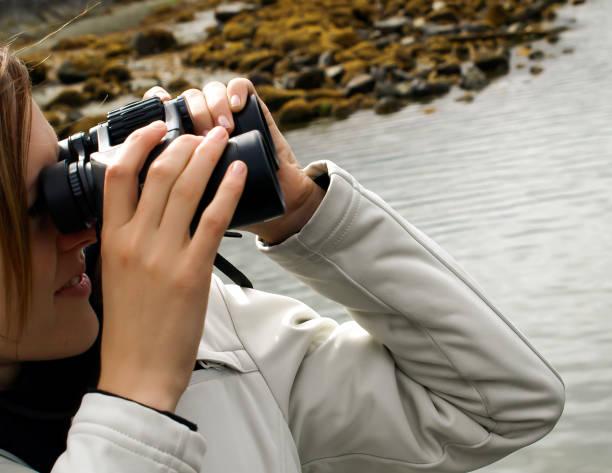Whale watching is an awe-inspiring experience that allows you to connect with the majestic creatures of the ocean. Whether you're an avid marine enthusiast or just looking for a thrilling adventure, binoculars can elevate your whale-watching escapade to a whole new level. In this comprehensive guide, we'll explore the fascinating world of whale watching and delve into the top binoculars designed to help you see every detail of these gentle giants.
The Art of Whale Watching
Understanding the Whales
Whale-watching binoculars is a recreational activity that has gained immense popularity in recent years. It offers a unique opportunity to witness the beauty and grandeur of some of the world's largest mammals. Whales are captivating creatures that come in various species, each with its own distinctive features and behaviors.
Humpback Whales
One of the most iconic whale species for whale watchers is the humpback whale. These giants are known for their acrobatic displays, breaching, tail-slapping, and hauntingly beautiful songs. Humpbacks can often be seen near coastal regions during their annual migrations.
Orca Whales
Orcas, or killer whales, are another species frequently sought after by whale enthusiasts. These intelligent and highly social animals are easily recognizable by their striking black-and-white coloration. They are known for their hunting strategies and tight-knit family pods.
Gray Whales
Gray whales are known for their long migrations, covering thousands of miles each year. They have distinctive gray coloration and can often be spotted close to shore during their migrations between feeding and breeding grounds.
Choosing the Right Binoculars
To fully appreciate the beauty and behavior of these magnificent creatures, you need the right pair of binoculars. Here are some factors to consider when selecting binoculars for whale watching:
Magnification and Objective Lens Size
Binoculars are often described by two numbers, such as 8x42. The first number represents the magnification, while the second represents the size of the objective lens in millimeters. Higher magnification allows you to see more detail, but it can also make the image shakier. A moderate magnification, like 8x, is ideal for whale watching.
Field of View
A wide field of view is crucial for spotting whales, especially when they surface unpredictably. Look for binoculars with a wide field of view to make it easier to track the whales as they move.
Image Stabilization
Whales can be elusive and may surface suddenly. Binoculars with image stabilization technology can help you maintain a steady view, even when you're on a moving boat.
Waterproof and Fogproof
Since whale watching often involves being near water, it's essential to choose binoculars that are waterproof and fogproof to ensure they can withstand the elements.
Size and Weight
Consider the size and weight of the binoculars, especially if you plan to carry them for extended periods. Compact and lightweight models are more convenient for long excursions.
Top Binoculars for Whale Watching
Now that you have a better understanding of what to look for in binoculars for whale watching, let's explore some top options available on the market:
1. Nikon Monarch 5 8x42
The Nikon Monarch 5 offers excellent optical performance with a wide field of view. These binoculars are waterproof and fogproof, making them suitable for marine environments. Their lightweight design and comfortable grip ensure you can use them for extended periods without fatigue.
2. Zeiss Victory SF 8x42
For those seeking the best in optics, the Zeiss Victory SF is a top choice. These binoculars provide exceptional clarity, brightness, and color accuracy. They are also waterproof and feature a large field of view, making them ideal for whale watching.
3. Bushnell H2O 10x42
The Bushnell H2O binoculars are affordable yet durable. They are waterproof and feature non-slip rubber armor for a secure grip, even in wet conditions. With 10x magnification, they offer a closer look at distant whales.
4. Vortex Optics Viper HD 8x42
The Vortex Optics Viper HD binoculars are known for their ruggedness and high-quality optics. They are waterproof, fogproof, and feature a wide field of view. The HD glass provides excellent color fidelity and resolution.
5. Swarovski EL 8.5x42
Swarovski is renowned for its premium optics, and the EL binoculars live up to that reputation. These binoculars offer exceptional clarity and brightness, making them a favorite among serious birdwatchers and whale watchers alike. They are also waterproof and built to last.
Tips for a Memorable Whale-Watching Experience
Whale watching is not just about the binoculars; it's also about the experience. Here are some tips to ensure your whale-watching adventure is unforgettable:
1. Choose the Right Location
Research the best locations for whale watching. Coastal areas with known whale populations,
such as Alaska, Hawaii, California, and New England, are excellent choices.
2. Timing Matters
Whales follow migration patterns, so the timing of your trip is crucial. Check when the best time to see specific species is and plan your visit accordingly.
3. Be Respectful
Whales are protected species, and there are strict guidelines for approaching them. Always maintain a safe distance and follow the guidance of experienced whale-watching guides.
4. Dress Appropriately
Dress in layers, as the weather can change quickly on the water. Don't forget sunscreen, a hat, and sunglasses to protect yourself from the sun's rays.
5. Bring Binoculars and a Camera
A good pair of binocular vision and a camera with a telephoto lens will help you capture the magic of the moment. Remember to turn off the flash when taking photos to avoid disturbing the whales.
